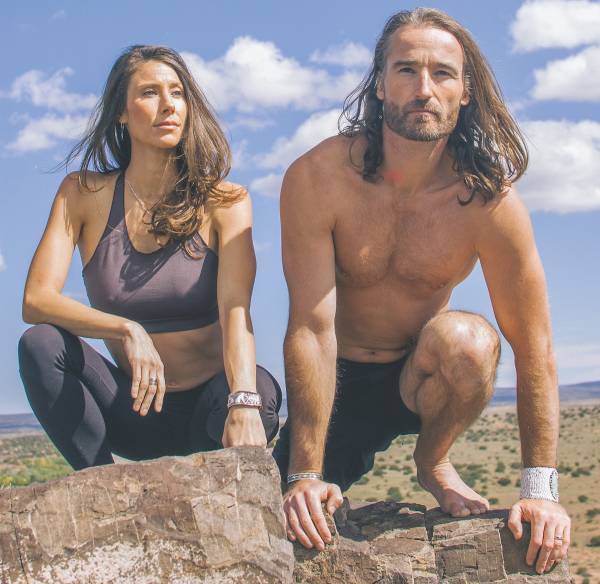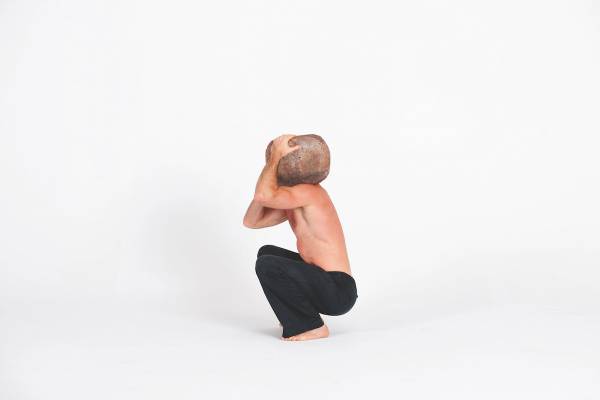Anyone who knows Erwan Le Corre knows that he is a deeply serious man and, in total contrast, a liberated family man who is unbound by conventions that most of us hang on to as to be normal. Le Corre has found a movement, MovNat, and has trained thousands of people in the art of natural movement.
It is, in essence, the antithesis of working out, seeing the gym as almost a nonsensical place for people to reclaim their strength, their mobility, and their health. Le Corre practices what he preaches in his daily life. You can see it in the natural movement articles he has written on Breaking Muscle, as well as in the social profiles of he and his wife.
His book, The Practice of Natural Movement, has been a long time coming. And it is worth it. Firstly, it is a quality print, well laid out, professional in every way. There are a number of popular books on movement methodologies that you can see lying around your average gym, but Le Corre’s book has them beat on a number of levels.
The Instinctual Coach
Firstly, the quality of writing is better than you will see in most exercise tomes. It is vivid and rich, and the explanations are clear enough for the most novice of readers to understand. So, this isn’t a book for the acolytes and disciples, although they will find plenty to enjoy. It should stand as a reference for Le Corre’s teachings for many years to come. It feels like a legacy-defining product.

Erwan and Jessika Le Corre live in the northern New Mexico mountains with their three young children, Feather, Eagle, and Sky
Secondly, because this is not a workout at home or gym equipment tutorial, there’s a lot of application for the ideas that Le Corre espouses. Granted, the origins of Le Corre’s approach in Parkour do come across and may be a little intimidating for some people, but put aside the urge to skim the pages so that you can get a deeper understanding of the core precepts of natural movement.
Finally, and most importantly, what makes natural movement so interesting is that it is very much dependent on the individual and therefore, this manual is a great way for anyone to begin to explore the possibilities for their own capabilities. Natural movement classes and practices don’t make riveting social media posts.
They’re not circus tricks and they’re not things that you would be able to do easily in a gym environment. But, you can’t deny the brilliance of a practice that allows you to freely flow through any landscape, ultimately reaping the fitness benefits in a way that few workouts can replicate.
Revolutionize Your Fitness Thinking
There is no doubt that Le Corre wants to revolutionize the way people think about fitness and their measure of success as a trainee (whatever that means). It’s not an easy battle to win when the vast majority of the fitness industry is focused on short-term goals and gimmicky, overnight success stories. So you have to hand it to people like Le Corre who are steadfast in focusing on lifestyle and longevity in a training modality. It’s pretty zen.
There are no PRs and skill sets to be learned here. It’s kind of sad to think that the focus on this book is to help people realize that they are naturally capable of doing so much more than they do and that we now need instruction on how to run, jump, climb, and fundamentally function with human bodies.
Knowing that your goal is to clear an obstacle or carry a person over a distance is a powerful source of motivation. Are you prepared? Are you physically helpful or helpless?
– Erwan Le Corre in The Practice of Natural Movement, pg. 33
A book on Natural Movement is probably the best location to start your practice in natural movement. Your environment is all the challenge you need, and your body is the only equipment required.
Who knows if someday we will see natural movement applied in a CrossFit gym the same way Romwods are these days. That would be great. But for natural movement to succeed people just have to realize that it is a real thing, not take it for granted.
Le Corre’s book could be something that sits on your shelf as a reference that you can come back to at any age, under any circumstance, and still find benefit in its approach.

There are some cons, to be fair, nothing is perfect. The two-column layout of the text makes the book manageable in size but it is a little unwieldy to read. And, we probably could have used more of the last segment of the book with lifting and throwing manipulations.
Natural movement adherents can become quite creative in developing routines and expanding into more advanced work, but not everyone has the ability to do that, and natural movement could probably use a more advanced, aspirational, and attainable set of practices.
That may be another book and if it is, hopefully, it will come sooner rather than later.






